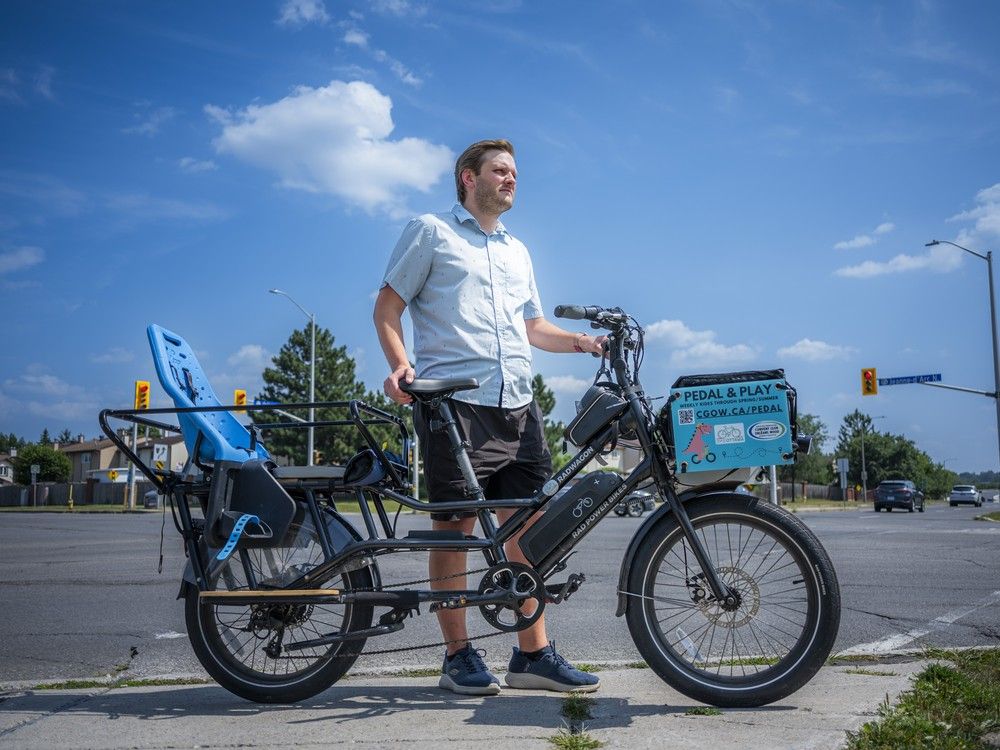
Driving home from Westboro on a weeknight around 9:45 p.m., I found myself idling at a red light at Kirkwood and Byron avenues. Not a car, cyclist or pedestrian was in sight or within earshot — yet I couldn’t legally turn right until the light turned green.
“Well, this seems a wholly unnecessary precaution,” I thought, as I scanned for the imaginary officer or hidden camera poised to catch me should I make the turn anyway.
But was it really unnecessary?
I awaited the green, arriving home maybe 30 seconds later than I would have otherwise — hardly an outrage. And, while this restriction at Kirkwood and Byron feels new, there was a time when it was the norm. According to the
Canadian Association of Road Safety Professionals
, Ontario only began allowing right turns on red lights provincewide in 1984, largely for convenience and to save fuel following the oil crises of the 1970s — not because anyone thought it made roads safer.
Quebec once looked into the matter
. A study commissioned by its Ministry of Transport in the early 2000s found that the average driver saved just 15 to 30 seconds a day and a few litres of gas per year by being allowed to turn right on red. Hardly worth the risk, it argued. The province allowed it anyway — except in Montreal, where the ban remains.
But now the balance between convenience and safety is shifting. There are more cars, cyclists and pedestrians on our streets, more aggressive drivers and more deadly consequences when the mix goes wrong. Last month alone, downtown Ottawa saw three serious collisions at intersections — one fatal — prompting Mayor Mark Sutcliffe to say, “We need to do everything we can to make sure that everyone is safe.”
Somerset Coun. Ariel Troster has proposed a downtown ban on right turns on red as part of a “Vision Zero” push to eliminate traffic deaths. The city’s current commitment calls for an annual 20 per cent reduction in traffic fatalities. College Ward’s Laine Johnson agrees with Troster’s proposal: “The number of people hurt on right turns on red, either as a pedestrian or cyclist, is inappropriately high. We need to do something.”
Even cab drivers, who make their living keeping traffic moving, see merit in limits. Unifor Local 1688 president Bahdon Issa, representing more than 800 Ottawa cabbies, would prefer peak-hour restrictions to a blanket ban, but admits that driving downtown is “very, very hectic” and that safety “is very paramount, even for us.”
Issa cites backseat rear-view mirrors, allowing passengers to see behind their taxi before exiting, as a safety feature adopted to lessen “dooring” incidents.
“I can certainly see (Troster’s) point of view for safety, because that’s paramount,” he adds. “But you have to have a balanced approach. We’re always on the road, and we’d like to have a voice in the decision.”
Cyclist, driver and father Rob Attrell points to bigger vehicles with bigger blind spots, inattentive scanning habits, and drivers who roll through reds rather than stopping fully as problems. The design of our streets, he says, practically invites danger.
Newer safety systems on vehicles, he notes, including lane-keep assist and adaptive cruise control, don’t help with right turns on red. “Those are mostly designed to either keep you going where you’re supposed to be going, or to notify you about where other vehicles are. But there’s not much consideration for any people who are outside your car.”
And, while Attrell, who sits on the board of directors of Bike Ottawa, supports Troster’s proposal, he sees additional measures that could also help, including changing traffic-light cycles to reduce those idle waits. “But we certainly support the city’s plan to look into this.”
The
city’s official open source collision data
, though, feels oddly incomplete. Of the 9,501 collisions in Ottawa in 2022, the most recent year for which figures are available, 745 occurred at signalized intersections where “turning movements” were a factor in the collision. Of those, only 33 involved bicycles, and apparently none involved pedestrians.
So either we have the savviest walkers in Canada, or our records are missing something.
(A request to Ottawa Police Service for more recent figures and RTOR data ran up against a Freedom of Information wall, which means we have to file a formal written request for the information. More, perhaps, in four to six weeks.)
And that’s only reported collisions. What about all the close calls?
A recent
Canadian Automobile Association study
fills in some of those blanks. Using cameras and AI, it tracked more than 600,000 incidents at 20 intersections nationwide — including one in Ottawa, at Merivale Road and Viewpoint Drive. More than half of the serious near-misses involved right-hand turns — although the study didn’t indicate the number that occurred at red lights.
The report also determined that right-turn conflicts happened less often when there was a dedicated right-turn lane, when speed limits were lower and when a leading pedestrian-interval — i.e. a walk signal that turned green before the light for motorists did — was present.
Statistically, though, one in every 770 pedestrian crossings and one in every 500 cyclist crossings results in a near-miss with an 85 per cent chance of serious injury or death.
In other words, your “quick” right turn could easily be someone else’s last moment.
If the trade-off is between getting home a few minutes sooner and reducing those odds, I’ll happily take the longer drive.
Related
- Tierney: Can’t see any lines on the road when you drive? It’s an increasing hazard
- Pellerin: Scrambling for safety — or how to make pedestrian crossings less dangerous


